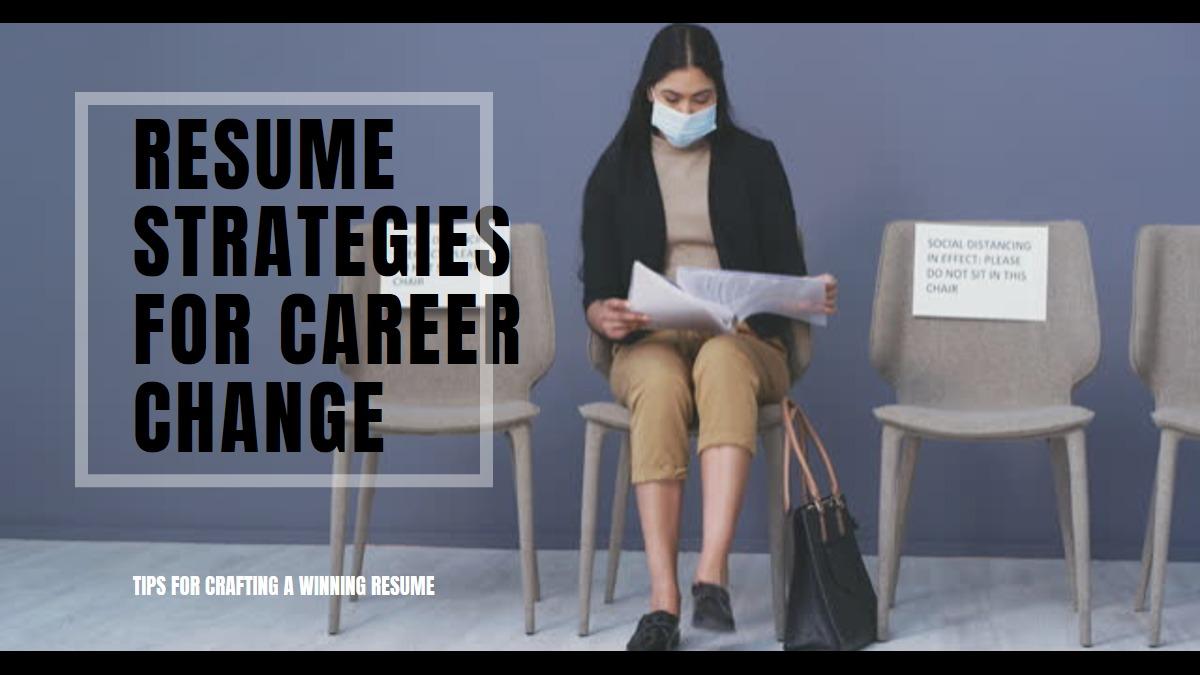
Crafting a Resume for a Career Change: Strategies and Tips
Jan 17, 2024. By Admin
Introduction: Navigating the Career Change Challenge
Embarking on a career change is a bold move that many professionals consider at some point in their lives. Crafting a resume tailored for a new field is a crucial step in this process. In this article, we'll explore effective strategies and tips to help you create a resume that not only highlights your transferable skills but also positions you as an ideal candidate for your desired career.
Understanding the Dynamics of Career Change Resumes
1. Identifying Transferable Skills: The Cornerstone of a Successful Transition
One of the first steps in crafting a resume for a career change is identifying your transferable skills. These are the skills you've acquired in your current or past roles that are applicable to your new career. Highlight these skills prominently, showcasing how they make you a valuable candidate in the new field.
2. Tailoring Your Resume for the Target Role
Generic resumes won't cut it when you're changing careers. Tailor your resume for the specific role you're targeting. Research the industry and role requirements, and customize your resume to reflect how your skills and experiences align with what employers are looking for.
3. Emphasizing Achievements and Results
Rather than focusing solely on job duties, emphasize your achievements and results. Use quantifiable metrics to showcase your impact in previous roles. This not only makes your resume more compelling but also demonstrates your ability to deliver tangible results in any professional setting.
Structuring Your Career Change Resume
1. Professional Summary: A Compelling Introduction
Begin your resume with a professional summary that succinctly communicates your career goals and the value you bring. Tailor this section to align with your new career path, emphasizing your passion and commitment to making a successful transition.
2. Skills Section: Showcase Your Versatility
Create a dedicated skills section that highlights both technical and soft skills relevant to your new field. This section serves as a quick reference for employers, showcasing your versatility and suitability for the role.
3. Experience: Emphasize Transferable Achievements
In the experience section, focus on transferable achievements. Use the STAR (Situation, Task, Action, Result) method to illustrate how you've applied your skills to achieve positive outcomes. Connect these experiences to the requirements of the new role.
4. Education: Spotlight Relevant Qualifications
While your previous education might not directly align with your new career, emphasize any relevant coursework, certifications, or training you've undertaken. This shows your commitment to gaining the necessary knowledge for the new field.
5. Additional Sections: Highlighting Professional Development
Consider adding sections such as "Professional Development" or "Training" to showcase any relevant courses, workshops, or certifications you've completed to enhance your skills in the target industry.
Navigating Career Gaps and Addressing Industry Transition Concerns
1. Handling Career Gaps
If your career change involves a gap in your work history, address it proactively. Briefly explain the reason for the gap and highlight any activities, such as volunteering or freelance work, that kept your skills sharp during this time.
2. Addressing Industry Transition Concerns
Acknowledge the industry transition in your cover letter. Use this space to convey your passion for the new field, your commitment to ongoing learning, and how your unique perspective and skills will benefit prospective employers.
Showcasing Your Personality: The Importance of a Well-Crafted Cover Letter
Your cover letter is an opportunity to add a personal touch to your application. Use it to tell your career change story, explaining why you are transitioning and how your background uniquely positions you for success. Tailor each cover letter to the specific job you're applying for.
The Role of Professional Resume Services in Your Career Change Journey
Crafting a resume for a career change can be challenging, and sometimes, expert guidance is the key to success. At CV Designer USA, our team of seasoned professionals specializes in creating resumes that stand out in competitive job markets. With a track record of helping individuals successfully transition to new careers, we understand the nuances of crafting impactful resumes tailored to your unique journey.
Explore our services today and let us help you pave the way to your new career path. Visit CV Designer USA for a consultation.
Conclusion: Your Path to a Fulfilling Career Awaits
Crafting a resume for a career change requires a thoughtful approach that highlights your transferable skills and aligns your experiences with the new industry's demands. By following the strategies and tips outlined in this article, you can confidently navigate the challenges of transitioning to a new career.
Remember, your resume is not just a document; it's a powerful tool that can open doors to exciting opportunities. Pair your efforts with the expertise of professionals at CV Designer USA to ensure your resume reflects the best version of your career change story.
Unlock your potential, showcase your capabilities, and embark on a journey to a more fulfilling career.





ADD COMMENTS
Your email address will not be published. Required fields are marked *